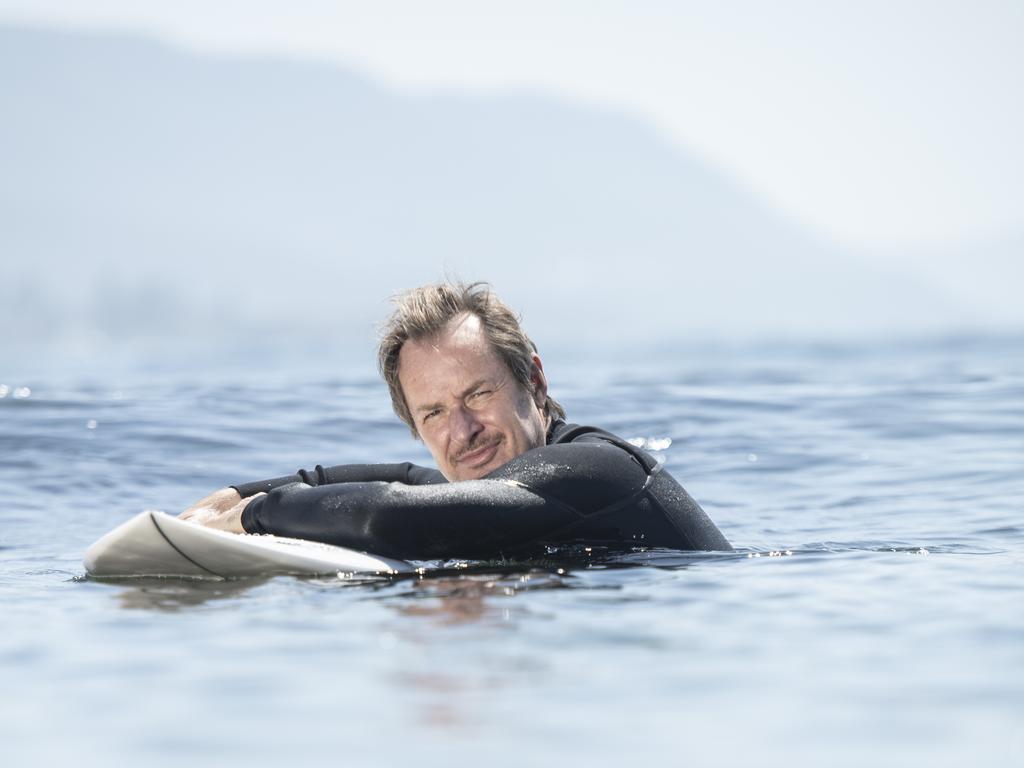Arts companies are in trouble. What can they learn from Richard Tognetti?
His ‘non-elitist approach to classical music’ has helped him rail against ‘northern hemisphere snobbery’ and ‘paltry’ government funding to lead the Australian Chamber Orchestra for 35 years.
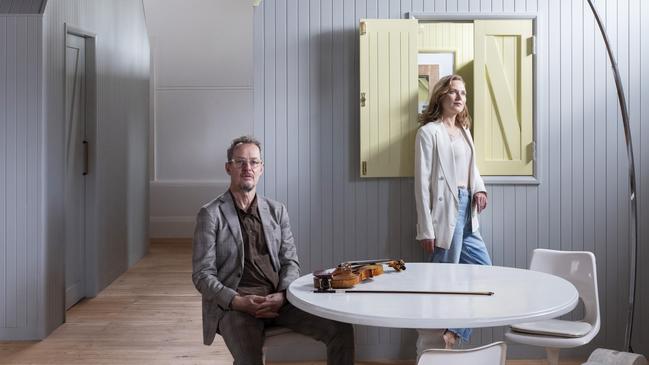
The gig was in a moody underground bar. Members of the Australian Chamber Orchestra had collaborated with Jonny Greenwood, lead guitarist of the English rock band Radiohead. And we were dancing. It wasn’t what I was expecting from my first time hearing a chamber music ensemble, but I was impressed by this urgent, impolite, pulsating interpretation of classical music, thinking that if this was what the ACO was about you could count me in.
Ten years on and it’s a Thursday evening in late winter. A party is in full swing at the beautiful harbourside headquarters of the Australian Chamber Orchestra in Sydney’s Walsh Bay. As the ferries bustle past and screams of glee drift across the harbour from Luna Park, one question keeps dominating the conversation: Do you remember your first ACO concert?
At the ACO’s 50th season launch, almost everyone has a memory of their first time. ABC Classic FM host Megan Burslem remembers being struck by how new and exciting the music felt. ACO managing director Richard Evans, then general manager of Bell Shakespeare, couldn’t get past the extraordinary energy coming off the stage, the inventiveness of the players, the risk-taking.
Energy, excitement, originality, virtuosity. Variations on a theme, the words come up again and again from ACO audiences and the musicians alike, all of them speaking with near-religious fervour about the ensemble. The responses go some way to explaining why the ACO, which receives only modest funding from the government but benefits from lavish private donations (a recently acquired $5 million violin will feature in this story) is forging such a clear, successful path into its second half-century.
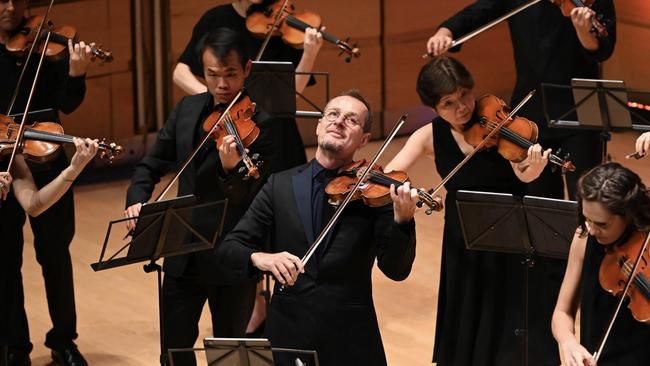
Today the ACO is still led by artistic director and lead violin Richard Tognetti, who took the reins at the tender age of 24 having never led an orchestra before and is showing no signs of stepping away after 35 years. This has been welcomed by his legion of supporters at a time of upheaval among Australian arts companies, many of which are making news for all the wrong reasons. In the week before this story went to press, three new heads of major arts institutions were appointed. And yet, if there’s an ingredient “X”, a recipe for success, the ACO and Tognetti surely know it.
A few weeks after the season launch party, The Weekend Australian Magazine’s photographer and I are invited into the home of Tognetti and his wife, ACO principal violin Satu Vänskä. A street away from the beach in Manly, Sydney, the arresting house is a 1917 former Masonic lodge that the couple managed to snag back in 2014, before prices skyrocketed.
The renovation, designed by “urbanist” Linda Gregoriou in collaboration with Vänskä, reflects the latter’s heritage – she was born in Finland but raised in Japan to Finnish Lutheran missionary parents. It’s an elegant fusion of Nordic style and Japanese minimalism, and imbued with a sense of warmth, with individual gingerbread-house-like structures that serve as Tognetti’s multimedia music room, a library and his 22-year-old son Leonardo’s bedroom. There are various guitars and surfboards dotted about, reflecting the couple’s passions, as well as art that invites you to stop and take a deeper look – works by former ACO collaborators Bill Henson and Michael Leunig among them.
“When Vänskä moved to Sydney in 2004 she began eyeing off this house, but it wasn’t for sale. Then it went on the market and we thought there was no way they’d accept our offer, but they did. It’s heritage, there’s no carpark, it wasn’t family friendly ... developers didn’t know what to do with it,” Tognetti says.
“But look at this building!” Vänskä adds. “We were lucky because we got what we saw – it hadn’t been renovated so it was quite decrepit but it had good bones. What I really like is you’re in a beachside apartment but you have no idea you’re at the beach, it looks like a Finnish village in here – that’s what Linda suggested.”
Vänskä, dressed down in a navy jumpsuit and bare feet, offers hot drinks, and Tognetti expresses his astonishment that we will be moving upstairs to her domain. I am ushered up to a more feminine, open plan living area that doubles as Vänskä’s rehearsal room.
The ACO encapsulates that rare, sought-after combination: innovation and stability. The 50th anniversary is no different. The year begins with two classical masterpieces – Brahms’s Violin Concerto and Beethoven’s Symphony No. 7 – and ends with a drag and cabaret sensation, Le Gateau Chocolat, in a show that also features works by musical game-changers Erik Satie and Lili Boulanger. In between, the company will perform five world premieres, commissions from renowned composers including the Ukraine’s Valentin Silvestrov and western Sydney’s Holly Harrison, and a new work by the electrifying Moldovan-Austrian violinist Patricia Kopatchinskaja.
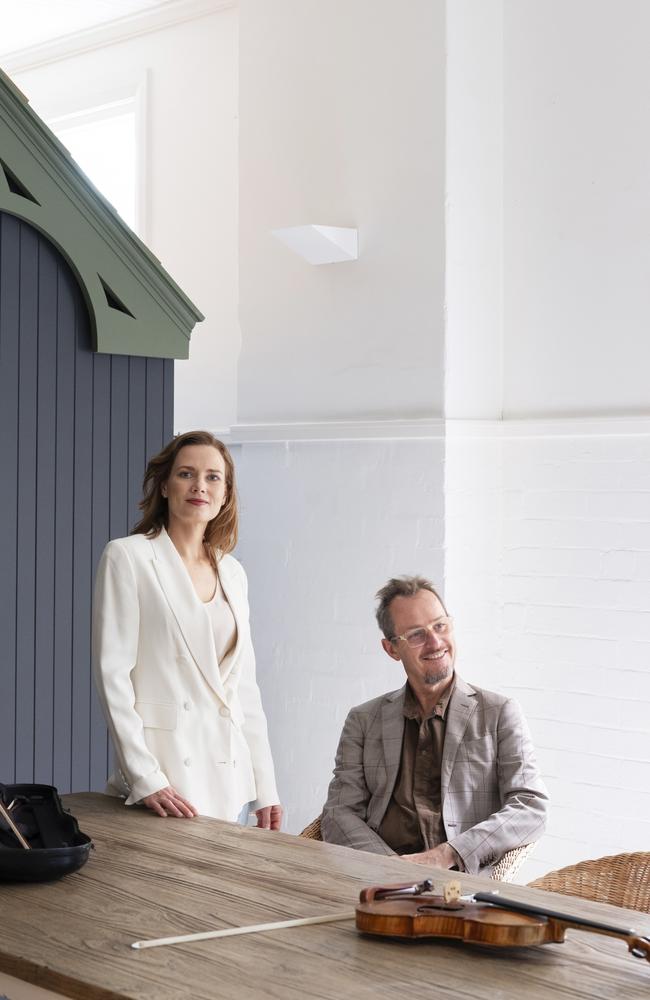
It all seems a long way from 1989, when Tognetti was asked to return from Bern in Switzerland to interview for the position of ACO artistic director, bringing with him some unprecedented, experimental ideas. With no experience running a chamber orchestra, the young Tognetti had nothing to lose – an attitude that has driven him since the moment he became artistic director in 1990.
Growing up in industrial Wollongong, NSW, with mathematician father Keith and business owner mother Irene, he’d been exposed to the radical Suzuki Method where music is taught by ear, rather than reading scores. He escaped Wollongong for the Sydney Conservatorium of Music aged just 11, an extraordinary relief and an experience that left him “very, very grateful to find that world”, before returning for the tertiary program aged 15. When he was 17 he moved to the Bern Conservatory in Switzerland where he studied, worked and travelled as a professional musician.
“I had a one-way ticket – I never wanted to come back to Australia, except as a visitor,” Tognetti recalls. Nevertheless he interviewed for and duly accepted the ACO role. “I thought I’d give it a bit of a go then go back to Europe. But here I am, all these years later.”
Given his youth and lack of experience, what did they see in him? “Potential,” Tognetti offers. “I had this very strong antipathetic stance to the early music movement, the sense of rebelliousness of certain Dutch musicians [Frans Brüggen and Anner Bylsma] which was nascent and vibrant and exciting, at a time when the musicians were very against new ways of looking at old music. And I wanted to embrace electronic music, so I started bringing that in, and I considered that alone to be fundamentally the most radical thing you could do in the musical sphere, which turned out to be true.”
From the get-go Tognetti was adamant his music was not going to be restricted to the cognoscenti. Not only would his musicians stand so they could move freely, encouraged to hone the idiosyncratic personalities for which they are known and loved today, Tognetti would go on to collaborate with contemporary musicians and artists, emphasising the timeless relevance of the repertoire, linking old and new worlds. People like Greenwood, The National’s Bryce Dessner, Henson the boundary-pushing photographer and entertainer Barry Humphries were among those Tognetti invited to guest with the orchestra.
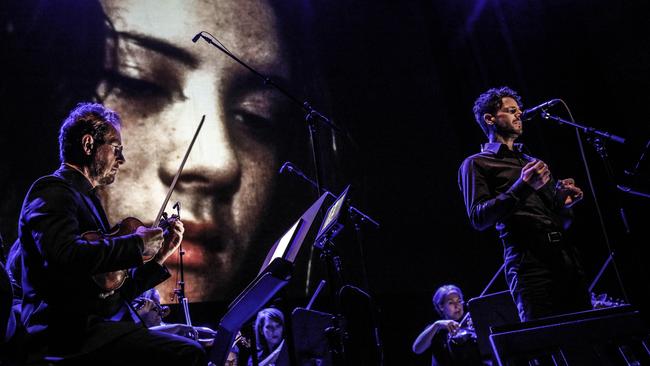
He began stretching the definition of music, too, expanding into filmmaking accompanied by original scores performed live, from The Reef, a surfing collaboration shot at Ningaloo in 2012 to the multi-award winning Mountain with BAFTA-nominated director Jennifer Peedom.
“The ACO’s non-elitist approach to classical music came from me not being intimidated by European elitism. I remember early on wanting to take on that ‘closed to the public’ attitude: sure you can buy a ticket but it’s not for you, it’s for elites, and if you don’t understand it – and no one does – then it’s your problem. When you play music for people you’ve got to respect those people, so the program is democratic, very democratic. Are we just slaves to the audience? No. It’s taken a long time but we’ve taken the audience with us.” This democratic approach to music and who can appreciate it can be seen in the orchestra’s robust regional and schools program, too.
The film projects were critically acclaimed, the contemporary music and art collaborations less so. “I got ‘f..k off’ kind of comments – ‘You don’t belong’, ‘Take your business elsewhere’.” Nevertheless, he and the orchestra persisted. Why? “Just one answer: the concert platforms in Australia were there for me,” Tognetti says. “We only really had Sydney and Melbourne [to begin with], we started Wollongong, we forged Brisbane, we didn’t have Adelaide, we certainly didn’t have Perth ... We created these platforms and in doing so I was able to bring to bear the democratised programming I believe in and thought was necessary.”
The orchestra is as busy and in-demand as ever, owing in no small part to its reliably good and reliably challenging repertoire. “The ACO is known to be of the highest quality of any chamber orchestra, anywhere in the world,” says managing director Richard Evans. “The inventiveness of the programs [Tognetti] has produced means the audience is constantly challenged. I talk about our audience being a ‘lean forward’ audience – they’re musical adventurers. And the way in which the music is presented is energetic and people are enthusiastic about it.”
Vänskä was living in Germany when she decided to audition for the ACO in 2004. “I knew it was an excellent orchestra and I also had that desire for the democratisation of music, and to play in a 21st-century [orchestra]. As a young musician you want to be part of something that’s a bit more exploratory and that’s what the ACO was providing in busloads, and that’s what’s rewarding about it: you feel like you’re in it now, rather than in museum aspic.”
Then there’s the instruments on which the orchestra plays, an extraordinary collection from the 17th and 18th century “Golden Age” that create a sound unlike any other. The ACO has no less than nine Golden Age instruments, including Tognetti’s 1741-44 violin crafted by Giuseppe Guarneri del Gesù. Considered one of the finest instruments in the world and worth around $5 million, it was purchased by the ACO with the assistance of anonymous donors and was selected by Tognetti after 12 months trialling multiple instruments around the world.
“I would have tried 20 of the top, top violins, 40 B [grade] violins – still amazing – and this
one was brought to me by an expert in the field,” Tognetti said. “Its sound is smoky, complex, guttural, dark and mysterious.”
Then there’s Vänskä’s 1728/29 Stradivarius violin; Helena Rathbone’s 1732 violin; and a 1616 Brothers Amati cello played by principal cello Timo-Veikko Valve.
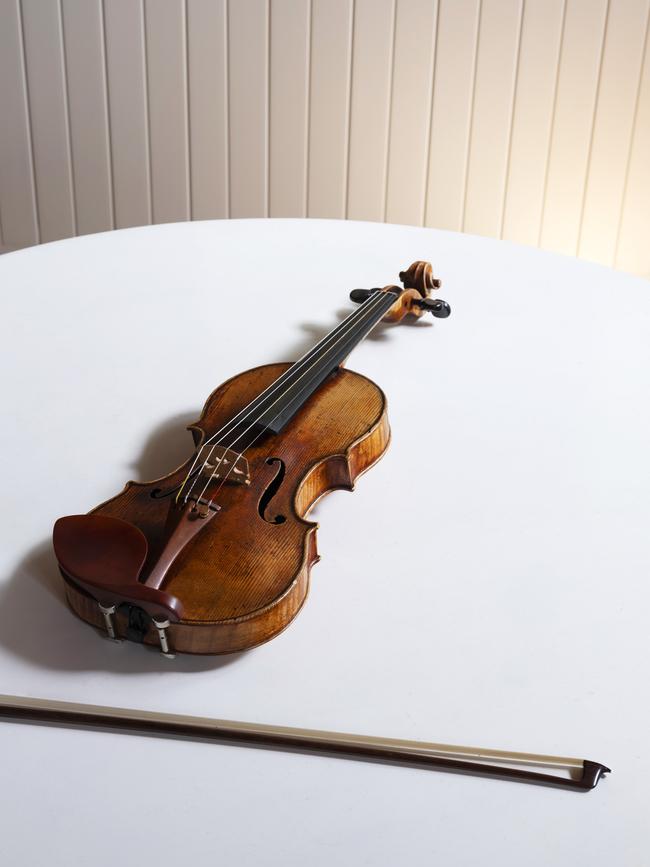
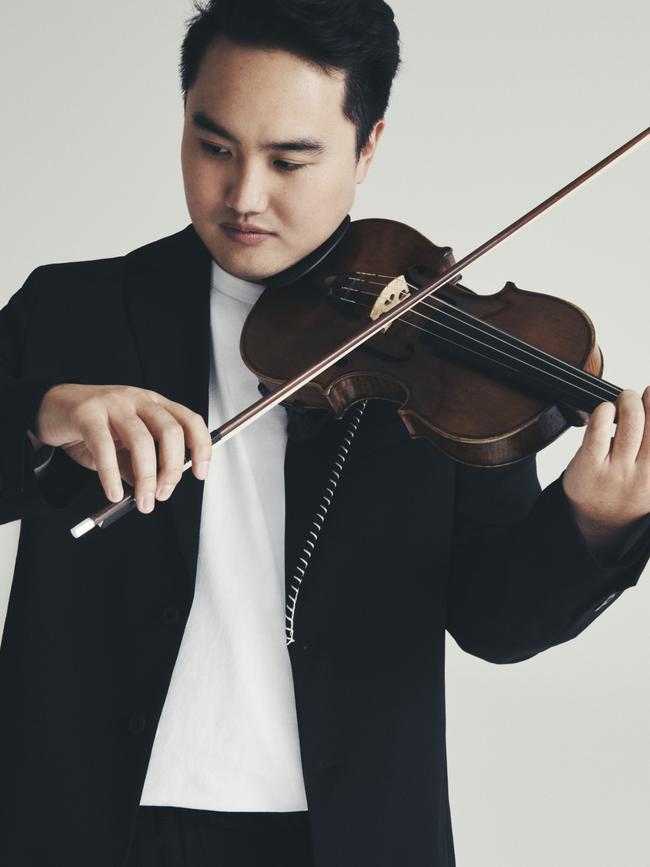
“We’re very fortunate to have one of the finest collections of Golden Age instruments of any orchestra on the planet,” says Evans. “Over time they develop a quality of sound that’s unlike anything else; that quality and the impact of having those instruments together has become the sound of the ACO. And of course the instruments attract the best players.”
At the heart of it all, of course, are the musicians. They’re the reason the crowds come, the reasons the philanthropists part with the big bucks, the reason Wesfarmers have just signed on as principal partner and the reason three sought-after young violinists turned down soloist careers and jobs with state symphony orchestras to submit themselves to the long, rigorous audition process that is the only route to the ACO. It speaks volumes that the three outgoing violinists they’re replacing had between them spent 40 years at the company.
All three of the new violinists were part of the ACO’s Emerging Artist Program, a one-year mentorship and training program that accepts around six young professional musicians each year. And like many of us, Thibaud Pavlovic-Hobba, Anna da Silva Chen and Tim Yu have imprinted on their memories their first ACO experience. “It was in Wollongong, I was quite young. They were one of the only orchestras who toured there and they were so cool!” enthuses da Silva Chen. “They were like rock stars, so free and energetic. Richard is fearless and bold and unashamed in his approach to music; it doesn’t just have to be beautiful and pleasing, it can also be shocking and ugly, and exciting in that way. That’s probably contributed to why the ACO is as successful as they are, because they’re always on the edge.”
“I remember seeing Richard playing with the Tasmanian Symphony Orchestra,” Pavlovic-Hobba says. “His presence on stage was all-encompassing, you could feel everyone going with him. Once I started studying in Melbourne I’d go to every concert and get excited by their energy. I loved the orchestra, but having a job there seemed so beyond everything, it seemed like another level.”
Yu first started playing as a casual violinist with the ACO in 2022. “I had been playing more often with the Sydney Symphony Orchestra and Opera Australia and from the first moment [the ACO] started playing I was so captivated by the sound, the energy,” he explains. “There are no words to describe it, I just loved every moment. It was such an eye-opening experience, I remember thinking, ‘Oh my God, it can be like this!’”
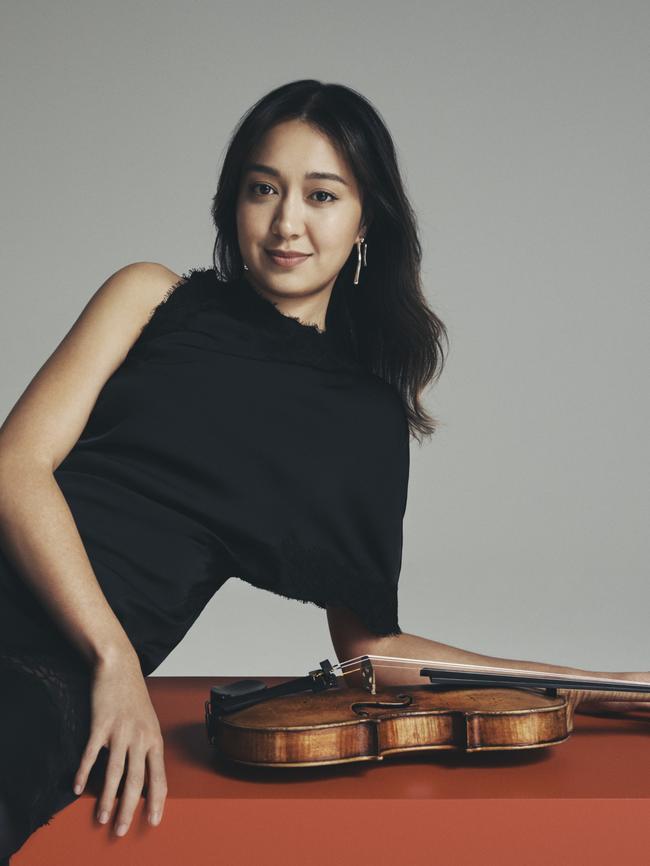
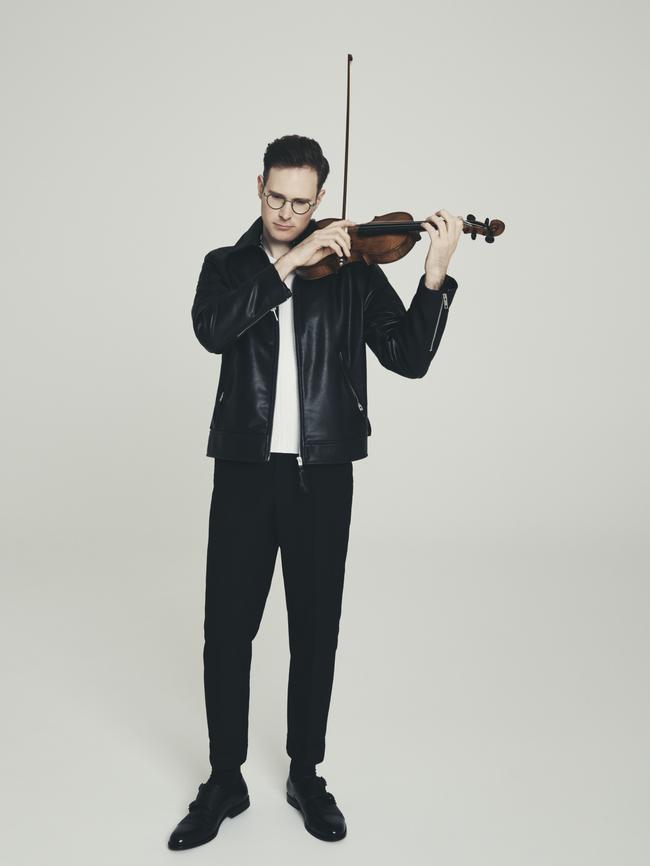
Now graduates of the Emerging Artist Program, the three of them are at the end of a three-month probation performing with the orchestra, and all remember the exact moment they were offered their probationary contracts. “They’re iconic because they’ve existed for so long, and to be able to function at such a high level for so long is really rare, for any group in the world,” says da Silva Chen. Adds Yu: “It’s a privilege to be part of it, to be trusted by them.”
I note they can’t yet bring themselves to refer to the ACO as “we”, not “them”. Not yet.
The high calibre and unrelenting expectation of each of the 17-strong ensemble extends to the management and board, many of whom have also remained with the organisation a long time. “There are a lot of orchestras out there, a lot of arts organisations, but we say unashamedly if you want to work at the ACO you have to be at a very high level,” says Evans. “Whether that’s as a board member, staff member and especially as a player, people need to be at the top of their game.”
It hasn’t all been plain sailing, of course. Despite regular five-star reviews in Australia and often abroad – “[It’s] an orchestra that, by any standards, is one of the wonders of the music world today,” noted the Guardian in 2017 – Tognetti feels the ACO is yet to be embraced internationally, to move beyond what he has coined “southern hemispherist” snobbery. He refers to a 2022 concert in what he calls a “hallowed European modernist hall” in which the ACO performed a piece by Polish modernist composer Wojciech Kilar, only to have the venue’s owner refer to it as “infantile”.
“One of our staff said, ‘But the audience loved it’ and out slipped a response that for me sums up the whole problem with modernism: the person said, ‘Exactly.’ I just thought, ‘You people need a good refresh and to have all your funding cut, then let’s see what happens to you.”
It is no secret that the ACO receives what can only be described as paltry government support: just 8 per cent of its core funding, with 40 per cent of the revenue coming from box office and another 40 per cent from private benefactors. Tognetti doesn’t attempt to hide his disdain for the lack of support shown by the Federal Government, in funding or in person. Only one sitting prime minister has attended the ACO to date: Malcolm Turnbull. “I wish the Government would identify that we’re the only [frequently] touring musical ensemble internationally. The Sydney Symphony Orchestra, as much as I admire them, for them to tour internationally ... imagine your budget calculator and issues of climate change [owing to their size]. So it’s left to us to be the only international touring Australian musical ensemble.”
Despite or perhaps because of this, public financial support for the ACO is strong, whether it’s long-standing board members or individual donors. Former chair Guido Belgiorno-Nettis, current chair Martyn Myer, deputy chair Liz Lewin, and regular donors the Neilson family, Alfred Moufarrige and Peter and Ruth McMullin are just a handful of those whose support for the orchestra has been generous, long-standing and trusting.
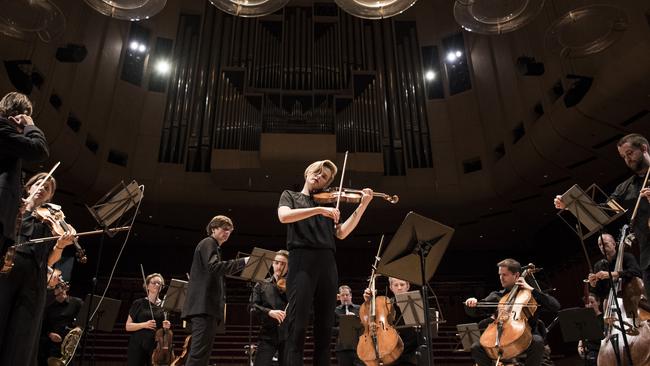
“We know we earn our right to do what we do,” says Evans. “We are an organisation that is very dependent on philanthropy. People know that unless they contribute to the orchestra we won’t be able to do all the things we want to do and keep touring, whether that’s to Wollongong or London, our productions for families or our [schools program].”
After 35 years of leadership you might expect Tognetti is desperate for new challenges, new climes. Not so. He is proud of what the orchestra has achieved on his watch. “I feel like I’ve had an important role in democratising classical music whilst raising standards, which is not an easy thing to do but in no small part because I have amazing colleagues.”
He feels there is still plenty to achieve. “I’ve still got a lot of goals to kick, a lot of movies to make, a lot of symphonies to play. I want to inspire other groups to start and play more concerts in Wollongong and Newcastle, that would be cool, and so much to do on the international front. We’ve got a lot of things on the table.”
Then there’s the question of legacy. “You think of legacy – and I’m not just talking about leaving a recording or two but a political legacy – of arts ministers turning up because they’re part of the ecology, [a] legacy that’s deep and profound in supporting the arts,” Tognetti says. “If we change the political landscape of this country artistically, I’ll feel we’ve left a legacy.”

